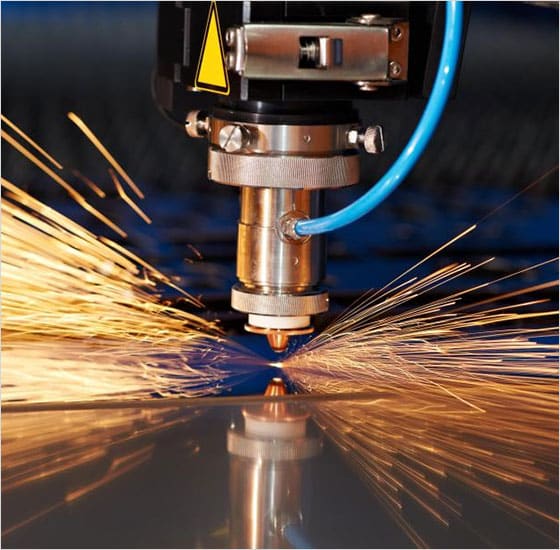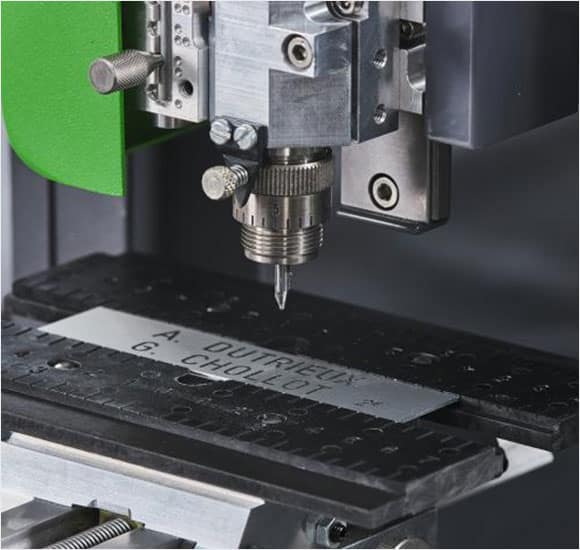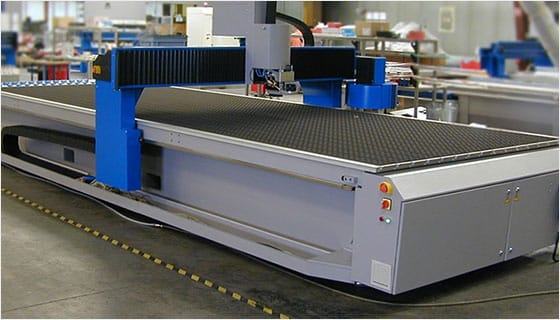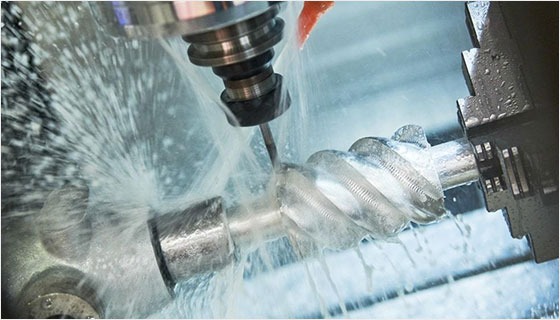Processes
- Polymer Processing
- Injection Molding Insert Molding Blow Molding Over Molding Metal Injection Molding Thermoforming
- Metal Casting
- Die Casting Castings & Forgings Wax Casting Lost Wax Casting Grey Iron Castings Centrifugal Casting Investment Casting Permanent Mold Sand Casting Shell Mold Casting Aluminum Investment Casting Brass Investment Casting Steel Investment Castings Titanium Investment Casting
- Machining
- Milling Turning EDM machining CNC Engraving Hole-making Tap Size Chart Drill Size Chart 5 axis machining Micro Machining CNC Cutting Metal Processes Ceramic Manufacturing Swiss Precision Machining
Materials
What is CNC Engraving?
Engraving is a process of carving patterns into hard surfaces and decorates or labels objects made of different materials. It can be done manually or using Computer Numerical Control machine tools and CAD-CAM software. CNC machines are capable of very complex engraving. CNC engraving can serve for practical or artistic purposes, such as add some textures on the part or make an embellishment. Compared with the manual engraving machine, the CNC engraving machine reduces the error, improves the speed, and has the ability to carry out all kinds of precision engraving.
What Can CNC Engraving Do – Applications of CNC Engraving
- Woodworking industry: three-dimensional wave board processing, cabinet doors, craft wooden doors, paint-free doors, screens, craft windows, processing furniture milling carving.
- Mold industry: all kinds of relief, shadow carving, plane carving, cutting, and other effects
- Advertising engraving: advertising signs, PVC board, dragon board, two-color board, logo production, acrylic cutting, Blister molding, large character cutting, crystal board, led, neon lamp groove, etc
- Stone carving: natural marble, granite, artificial stone, tombstone, milestone, ceramic tile, glass, and other materials of three-dimensional relief and line carving, cutting, chamfering, drilling two-dimensional carving
- Handicraft industry: it can carve all kinds of exquisite patterns and characters on wood, bamboo, artificial marble, organic board, crystal, and other materials.

Characteristics and Advantages of CNC Engraving
- Processing capabilities: text, pattern, texture, small complex surface, thin-walled parts, small precision parts, irregular art relief surface, etc.
- The size of the processing part is small, the shape is complex, and the finished product is fine
- Process features: only small tools can be used
- The product has high dimensional accuracy and good consistency
- High-speed milling with high speed, small feed, and fast feed
What is CNC Engraving Machine?
In metalworking, the engraving machine is a kind of small copying-milling machine with a pantograph, with cutting tools, which is used to cut stamps, inscriptions, and figures on machined parts. CNC engraving machines are computer-based engraving machines used to produce engravings from a drawing, stencil, or model. The CNC engraving machine processes the milling paths which the CAD-CAM software creates from the design and transmits to the control device. The high-speed rotary engraving head on the CNC engraving machine can cut the workpiece fixed on the main machine workbench through the cutters configured according to the processing materials, and then various plane or three-dimensional relief graphics and characters designed in the computer can be carved, so as to realize the automation of engraving. Common engraving tools are V-bits, drag engravers and small ballnose end mills.

Precision CNC Engraving Machine Construction – Parts of Engraving Machine
- Machine head: composed of z-axis drive motor, guide rail, transmission parts and motorized spindle
- Worktable: used for clamping workpieces or fixtures
- Guard plate: to prevent the machining scraps, dust and splashing cutting oil from falling onto the transmission parts and guide rails
- Oil groove: make the cutting oil can be recycled
- Base: used to fix and support the machine
- Column: used to support the beam and head
- Crossbeam: X-axis drive motor, transmission parts and guide rail are installed
- Oil tank: the supply device of cutting oil
- Water tank: provide circulating cooling water for spindle
- Control cabinet: support and protect machine tool electrical box, control computer and display

- Control computer: processing data and sending signals to control the movement of machine tool
- Display: display control information of control computer
- Machine tool electrical cabinet: the signal transmitted from the control computer converted into a strong driving current to drive the machine tool
- Power plug: the part connecting machine tool and power supply
- Z-axis drive motor: a power component that drives the spindle up and down along the z-axis
- Emergency stop switch: the button to stop the machine tool in an emergency
- Coolant switch: the switch that controls the start and stop of the motor in the cooling oil tank
- Light switch: machine tool work light switch
- X-axis protective cover: to prevent dust, flying debris, debris in and out of the x-axis movement mechanism
- Spindle motor: the tool used for clamping processing, and provides rotating power for the tool

Different Engraving Techniques and Methods
- Laser engraving: the most popular engraving method now, which employs a thermal laser produced by a laser beam to evaporate surplus material in a specified area. The laser head oscillates back and forth, creating clean cuts and intricate engravings. You may change the direction, speed, depth, and other parameters.
- Electric engraving entails the use of EDM and welding technologies. The metal needle serves as the anode, with the material to be cut serving as the cathode. The current traveling between the cathode and anode burns the material at the etched spot. This carving can only be used with conductive materials.
- Hand carving: a classic carving process that involves the use of hand tools such as bending tools with sharp blades. This style of carving is used to dilute lettering on tombstones, among other things, and it is an excellent choice for high craftsmanship.
- CNC rotary engraving: rotary tools are often used to remove materials, making them ideal for indoor and outdoor signatures, nameplates, wood 3D effects, and so on. Computer-controlled tools can cut a wide range of forms and patterns.